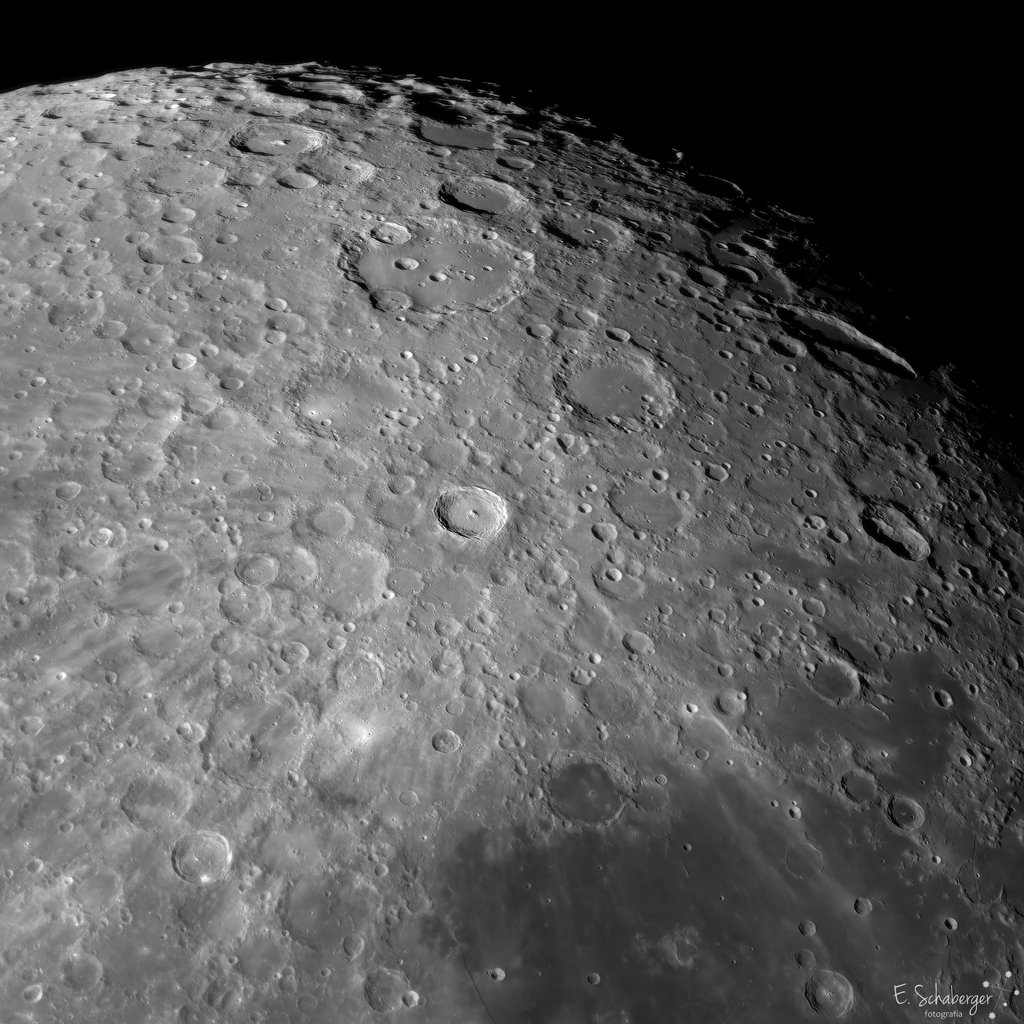第谷和克拉维斯
(原标题: Tycho and Clavius)
2021-08-05
浏览次数: 165
在这张详细的望远镜照片中,南方在月球崎岖的南部高地上。这张照片拍摄于7月20日,展现了年轻的月球和年老的月球,大陨石坑第谷和克拉维斯。第谷大约有1亿年的历史,是靠近中心的直径85公里的陨石坑,其2公里高的中央山峰在明亮的阳光和黑暗的阴影中。在形成第谷的撞击过程中喷射出的碎片,在月球接近满月时,仍然使第谷成为一个突出的月球陨石坑,产生了一个高度可见的辐射系统,明亮的光线延伸到月球近侧的大部分地区。事实上,在阿波罗17号着陆点收集的一些物质,大约2000公里外,可能来自第谷撞击。克拉维斯是月球近侧最古老、最大的陨石坑之一,直径225公里,位于第谷正南(上图)。克拉维斯陨石坑本身的射线系统是由最初的撞击事件产生的,它在很久以前就消失了。旧陨石坑的磨损的墙壁和光滑的地面现在被克拉维斯形成后撞击产生的较小的陨石坑所覆盖。2020年发表的平流层红外天文观测站(SOFIA)的观测结果发现,克拉维斯有水。当然,年轻的第谷陨石坑和年老的克拉维斯陨石坑都是科幻史诗《2001太空漫游》中的月球地点。
查看原文解释
South is up in this detailed telescopic view across the Moon's rugged southern highlands. Captured on July 20, the lunar landscape features the Moon's young and old, the large craters Tycho and Clavius. About 100 million years young, Tycho is the sharp-walled 85 kilometer diameter crater near center, its 2 kilometer tall central peak in bright sunlight and dark shadow. Debris ejected during the impact that created Tycho still make it the stand out lunar crater when the Moon is near full, producing a highly visible radiating system of light streaks, bright rays that extend across much of the lunar near side. In fact, some of the material collected at the Apollo 17 landing site, about 2,000 kilometers away, likely originated from the Tycho impact. One of the oldest and largest craters on the Moon's near side, 225 kilometer diameter Clavius is due south (above) of Tycho. Clavius crater's own ray system resulting from its original impact event would have faded long ago. The old crater's worn walls and smooth floor are now overlayed by smaller craters from impacts that occurred after Clavius was formed. Observations by the Stratospheric Observatory for Infrared Astronomy (SOFIA) published in 2020 found water at Clavius. Of course both young Tycho and old Clavius craters are lunar locations in the science fiction epic 2001: A Space Odyssey.
© Eduardo Schaberger Poupeau
